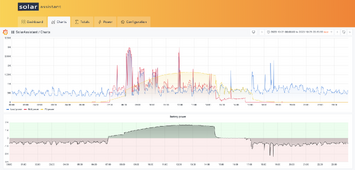LuxOfTheIrish
New Member
Hello, I'm fairly new so apologies if this was discussed earlier, I searched and read relevant posts as best I could before posting this:
I contacted a company that sell victronic clones but didn't get a clear answer:
An off-grid voltronic "clone" has an AC input. Does that mean that it will take grid to supplement output but never backfeed? So is it operating on an unmatched sinewave?
Secondly, is there a way to operate a voltronic "hybrid" inverter with no back-feed to the grid? If I have the AC output not connected to the grid(?) or will it still always potentially backfeed throught the AC grid input?
I don't really trust the CT clamp option for the newest smart meter. I don't want any export.
Thanks in advance
I contacted a company that sell victronic clones but didn't get a clear answer:
An off-grid voltronic "clone" has an AC input. Does that mean that it will take grid to supplement output but never backfeed? So is it operating on an unmatched sinewave?
Secondly, is there a way to operate a voltronic "hybrid" inverter with no back-feed to the grid? If I have the AC output not connected to the grid(?) or will it still always potentially backfeed throught the AC grid input?
I don't really trust the CT clamp option for the newest smart meter. I don't want any export.
Thanks in advance
Last edited:





